Top 10 Aquatic Animals | Prices, Types, Examples, Facts, Meanings
Welcome to the enchanting world of aquatic animals! From majestic marine mammals to colourful coral reefs, these creatures have adapted to thrive in water environments. Join us on this journey as we explore the diverse life beneath the waves and uncover the wonders of aquatic ecosystems. Let’s dive in and discover the fascinating world of aquatic animals together!
What Are Aquatic Animals
Aquatic animals, also known as marine animals, are those that live in water for a significant part of their lives. They encompass a wide range of species, from tiny plankton to majestic whales. These incredible creatures are found in various aquatic ecosystems, such as oceans, seas, rivers, lakes, and even estuaries.

One of the most diverse groups of aquatic animals is fish. They come in all shapes and sizes, displaying a dazzling array of colours and patterns. Fish have been around for millions of years and play a crucial role in aquatic ecosystems as both predators and prey.
Another intriguing group of marine animals is marine mammals. These air-breathing creatures include dolphins, seals, and the mighty whales. Marine mammals have evolved numerous adaptations to thrive in their aquatic habitats, such as streamlined bodies and specialized respiratory systems.
Invertebrates also dominate the aquatic world. Fascinating creatures like corals, jellyfish, and squids are all part of this diverse group. Some invertebrates, like corals, build intricate reefs that support a myriad of other marine life, making them essential for maintaining biodiversity.
Aquatic animals face various challenges, including pollution, climate change, and overfishing. Conservation efforts are crucial to protect their delicate ecosystems and ensure the survival of these magnificent creatures for future generations.
Importance of Aquatic Animals in the Ecosystem
Aquatic animals form an integral part of the ecosystem, serving as key players in various ecological processes. They contribute to nutrient cycling, act as prey for other species, and help maintain biodiversity.
Adaptations of Aquatic Animals
Surviving in water demands specific adaptations, which vary among different water animals.
Respiration
Aquatic animals have developed diverse respiratory systems. Fish use gills to extract oxygen from water, while marine mammals surface to breathe through lungs.
Movement
Efficient movement is crucial for aquatic animals. Fish use their fins to propel through water, while marine mammals use their streamlined bodies and powerful tails for swimming.
Reproduction
Aquatic animals have evolved unique reproductive strategies. Some lay eggs in protected environments, while others give live birth to offspring.
Threats to Aquatic Animals
Aquatic animals face numerous threats that jeopardize their survival.
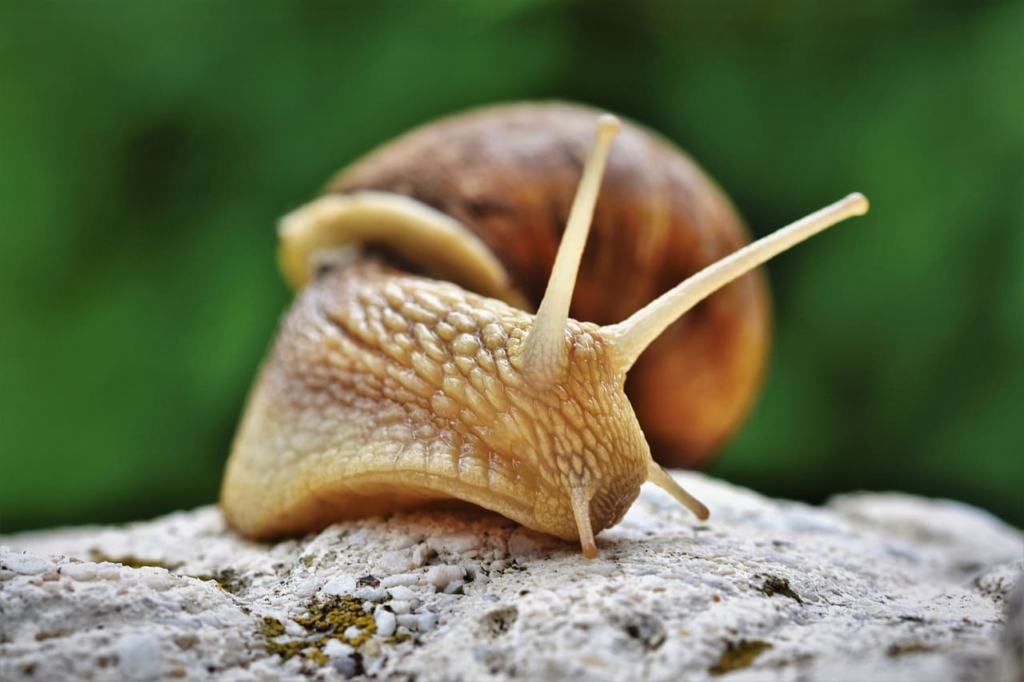
Pollution
Water pollution, caused by human activities, poses a significant threat to aquatic animals. Chemical pollutants and plastic debris can harm and even kill marine life.
Overfishing
Unsustainable fishing practices deplete fish populations and disrupt marine food webs, affecting the entire ecosystem.
Habitat Destruction
The destruction of aquatic habitats, such as coral reefs and wetlands, diminishes the available living space for aquatic animals.
Conservation Efforts of Aquatic Animals
Efforts are being made worldwide to protect aquatic animals and their habitats.
Marine Protected Areas
Marine protected areas (MPAs) are designated zones aimed at conserving marine life and habitats.
Sustainable Fishing Practices
Promoting sustainable fishing practices ensures the long-term viability of fish populations.
Pollution Control
Strict pollution control measures are essential to reduce the harmful impact on aquatic environments.
Aquatic Animals and Human Interaction
Aquatic animals have a significant impact on human life, and humans, in turn, affect them.
Aquaculture
Aquaculture, or fish farming, provides a source of seafood but must be managed sustainably to prevent environmental damage.
Aquatic Animal Tourism
Tourism based on observing aquatic animals can generate awareness and funding for conservation efforts.
Aquatic Animals Are More Comfortable In Cold Water
Unlike their terrestrial counterparts, many aquatic creatures find colder waters more comfortable. Their bodies are specially adapted to regulate their internal temperatures, enabling them to survive and flourish in these chilly habitats. Whether it’s a sleek dolphin or a graceful fish, aquatic animals have evolved to thrive in the cold embrace of the water.
Aquatic Habitat Animals
The aquatic habitat is a diverse and vibrant ecosystem that houses an array of animals. From agile dolphins to curious turtles and mesmerizing schools of fish, the variety of life in aquatic habitats is awe-inspiring. Additionally, countless invertebrates, such as snails and squids, call these waters home, adding to the richness of the ecosystem. The aquatic habitat is not only a feeding ground but also a place of shelter and reproduction for many aquatic species.

Adaptation Of Aquatic Animals
Adaptation is the key to the survival of aquatic animals. Over time, they have evolved unique traits that help them thrive in their watery homes. Some have streamlined bodies for efficient swimming, while others have developed specialized gills to breathe underwater. These incredible adaptations have allowed aquatic animals to conquer various challenges posed by their habitat. From the ability to withstand extreme pressure in the ocean’s depths to the capability of surviving in both freshwater and saltwater, aquatic animals showcase remarkable versatility.
The Snail Is An Aquatic Animal
One fascinating example of an aquatic animal is the snail. Yes, snails are not just found on land but also in freshwater and marine environments. These adaptable creatures exhibit intriguing behaviours and are an essential part of the aquatic food chain. Snails play a crucial role in maintaining the balance of their habitats, as they feed on algae and decaying matter, helping to clean the environment.
Aquatic Animal Cue Card
Aquatic animals, also known as marine animals, are captivating creatures that thrive in water environments. From the smallest plankton to the largest whales, the diversity of aquatic life is mesmerizing. Let’s dive deep into the fascinating world of aquatic animals and explore their unique characteristics and the vital role they play in our ecosystems.
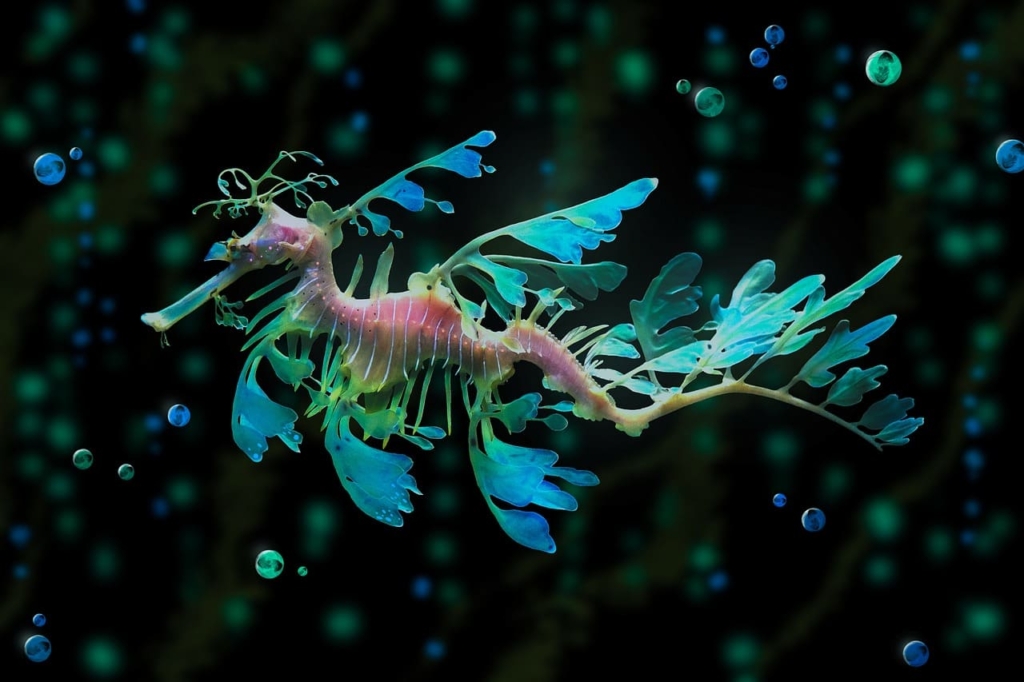
1. Adaptations for Aquatic Life:
Aquatic animals have evolved remarkable adaptations to live and move efficiently in water. Fish, for instance, have streamlined bodies and fins that help them glide effortlessly through the water. Marine mammals like dolphins and whales possess specialized respiratory systems, allowing them to breathe air while spending extended periods underwater. These adaptations showcase nature’s ingenuity in creating life forms that harmonize with their watery habitats.
2. Marine Biodiversity:
The oceans cover more than 70% of our planet’s surface and are home to an astonishing array of aquatic creatures. Coral reefs, known as the “rainforests of the sea,” host an abundance of marine species, providing shelter, breeding grounds, and sources of food for countless animals. The biodiversity in marine ecosystems is crucial for maintaining ecological balance and supporting life on Earth.
3. Conservation Challenges:
Despite their vital importance, aquatic animals face numerous challenges in the modern world. Pollution, overfishing, climate change, and habitat destruction threaten their survival. Plastic waste, oil spills, and global warming have severe consequences on marine life. Conservation efforts are essential to protect these majestic creatures and preserve the delicate balance of marine ecosystems.
4. Importance in Food Chains:
Aquatic animals play crucial roles in food chains, shaping the dynamics of their ecosystems. From tiny phytoplankton, which forms the foundation of marine food webs, to apex predators like sharks, each species contributes to the intricate web of life in oceans, rivers, and lakes. The health of aquatic animals is indicative of the overall well-being of our planet’s waters.
Aquatic Animals Meaning
Aquatic animals are creatures that live and thrive in water for a significant part of their lives. They are well-adapted to their aquatic environments, whether it’s in freshwater bodies like rivers and lakes or saltwater habitats such as oceans and seas. These animals have evolved various physical and behavioural adaptations to survive and flourish in their watery homes.
Aquatic Animals Meaning In Hindi
जलचर प्राणी (Jalchar Prani) – जलचर प्राणियों के अर्थ में वे प्राणी होते हैं जो अपने जीवन के एक महत्वपूर्ण हिस्से को पानी में बिताते हैं। वे अपने जलीय वातावरण में अच्छी तरह से अनुकूलित होते हैं, चाहे यह नदियों और झीलों जैसे मीठे पानी के जलधरों में हो या समुद्रों और समुद्रों के जलवायु के ऐसे खास स्थलों में हो। इन प्राणियों ने अपने जलीय घरेलु तथा व्यवहारिक अनुकूलन के लिए विभिन्न शारीरिक और व्यवहारिक अनुकूलन विकसित किए हैं।
Aquatic Animals Meaning In Tamil
நீர்நிலை விலங்குகள் (Neernilai Vilangugal) – நீர்நிலை விலங்குகள் என்பவை, அவர்கள் வாழ்க்கையின் ஒரு முக்கிய பகுதியில் நீரில் வாழ மற்றும் வளர்ந்து வளர்ந்து போகும் உயிரியல் உயிர்கள் ஆவர். இவர்கள் தங்கள் நீரிய சூழலில் பொதுவாக அரசாங்கப் பரிசுகளை முகாம் செய்யும் தன்மைகளை விளைவிக்குகின்றன.
Aquatic Animals Meaning In Marathi
जलचर प्राण्या (Jalchar Pranya) – जलचर प्राण्या म्हणजे प्राण्या ज्या त्याच्या आयुष्याच्या एक महत्वाच्या भागात पाण्यात वास करतात आणि त्यांच्या जलवातावरणात वाचायचा प्राणी. त्यांचे जलीय वातावरणात वास करण्यासाठी त्यांच्या शारीरिक आणि वर्तनसाठी विविध अनुकूलन आवश्यक आहे.
Aquatic Animals Meaning In Telugu
జలచర జంతువులు (Jalachar Jantuulu) – జలచర జంతువులు, వారి జీవితంలో ఒక ముఖ్యమైన భాగంగా నీరులో ఉంటాయి మరియు వాటి జలవాతావరణంలో నివసిస్తాయి. వాటిలో ఉన్న ప్రాణులు అనేక శరీర మరియు వర్తన అనుకూలనాలు అభివృద్ధి చేసినవి.
Types Of Aquatic Animals
Aquatic animals encompass a wide variety of species that thrive in different water environments, from freshwater lakes and rivers to saltwater oceans and seas. Here are some fascinating types of aquatic animals:
1. Aquatic Animals Fish:
Fish are perhaps the most diverse group of aquatic animals. They come in various shapes, sizes, and colours. From tiny guppies to massive whales sharks, fish occupy almost every aquatic habitat on Earth. They have fins and gills that enable them to swim and breathe underwater.
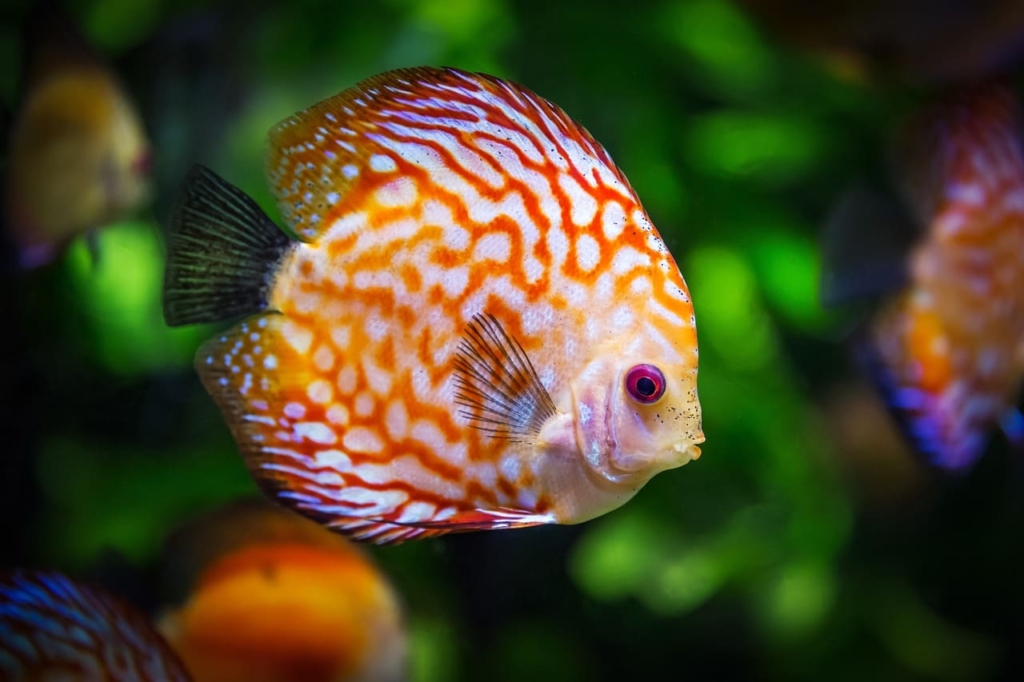
2. Aquatic Animals Marine Mammals:
Marine mammals are air-breathing animals that spend a significant portion of their lives in water. This group includes dolphins, whales, seals, sea lions, and manatees. Marine mammals are known for their intelligence, social behavior, and remarkable adaptations to their marine environments.

3. Reptiles Aquatic Animal:
Some reptiles are also well-adapted to aquatic life. Sea turtles, for example, are ancient creatures that travel through the oceans to lay their eggs on sandy beaches. Saltwater crocodiles and various species of snakes can also be found in coastal and estuarine waters.

4. Amphibians Aquatic Animal:
Amphibians are known for their ability to live both in water and on land. Many species, such as frogs and salamanders, begin their lives in water as tadpoles before transforming into adults that can survive on land.

5. Crustaceans Aquatic Animal:
Crustaceans are a group of arthropods that live in aquatic environments. This includes creatures like crabs, lobsters, shrimp, and crayfish. They are known for their hard exoskeletons and play essential roles in marine food chains.

6. Cephalopods Aquatic Animal:
Cephalopods are a group of mollusks that include octopuses, squids, and cuttlefish. They are intelligent and highly adaptable predators with well-developed nervous systems and complex behaviours.
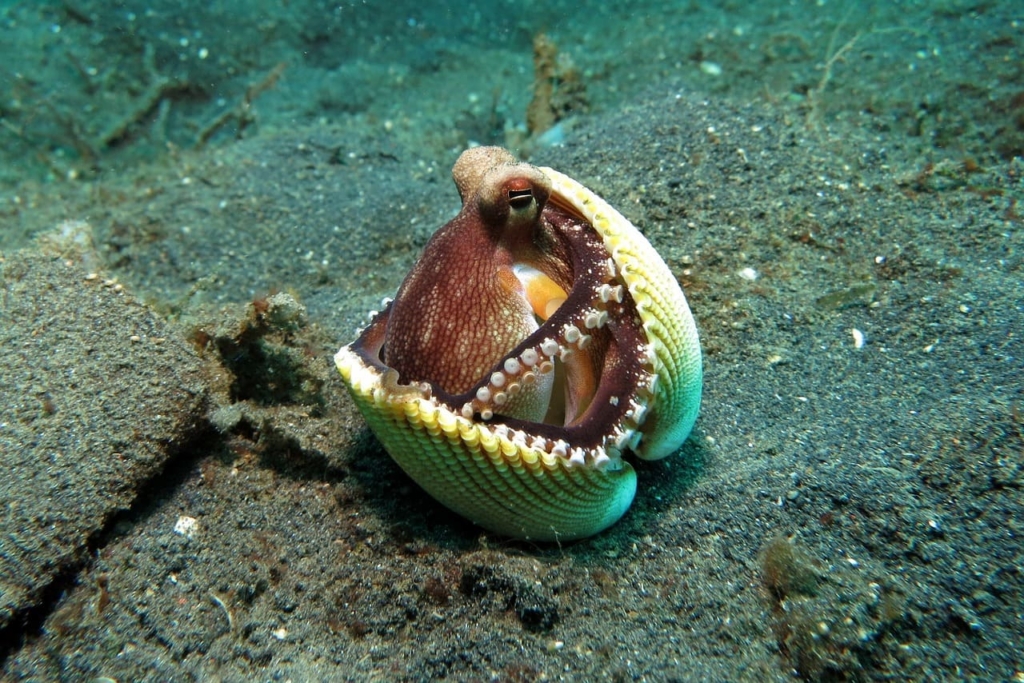
7. Jellyfish and Corals Aquatic Animals:
Jellyfish are gelatinous, free-floating creatures found in oceans around the world. Corals, on the other hand, are sessile animals that form intricate reef structures, providing shelter and support to a wide range of marine life.
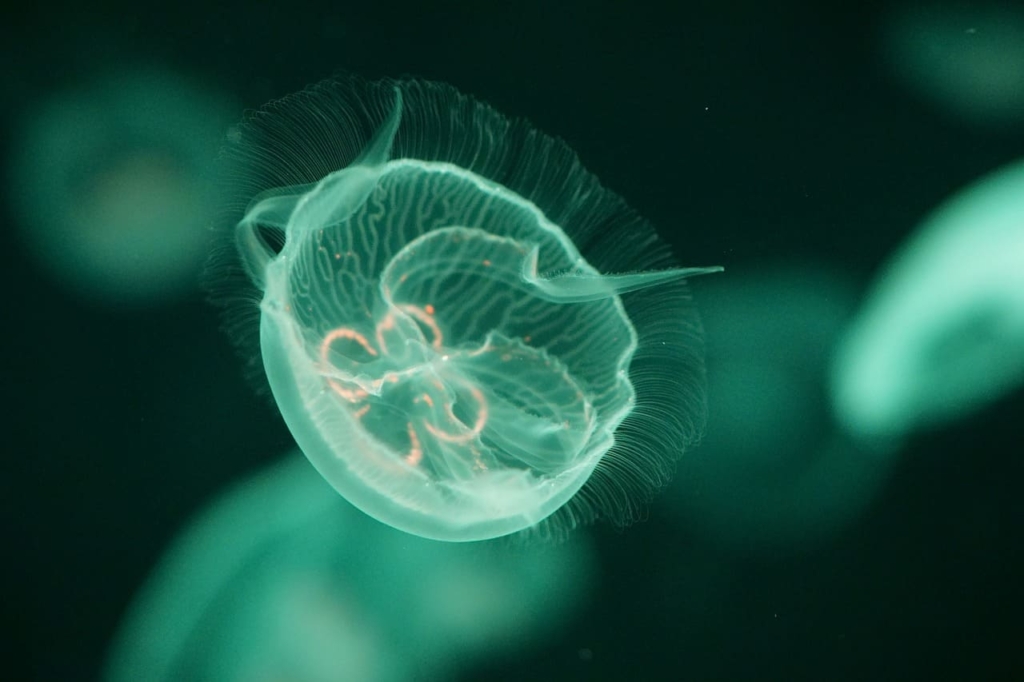
8. Echinoderms Aquatic Animals:
Echinoderms are marine animals characterized by their radial symmetry. Examples include starfish, sea urchins, and sea cucumbers. They play vital roles in marine ecosystems, contributing to nutrient recycling and predation.

9. Mollusks Aquatic Animals:
Mollusks are a diverse group of aquatic animals that includes snails, clams, mussels, and oysters. They have soft bodies protected by hard shells and can be found in various aquatic environments.

10. Plankton Aquatic Animals:
Plankton comprises tiny organisms, both plant-like (phytoplankton) and animal-like (zooplankton), that drift along ocean currents. They form the base of marine food chains and are essential for global ecosystems.

National Aquatic Animal: Gangetic Dolphin
The National Aquatic Animal of India is the Gangetic Dolphin (Platanista gangetica), also known as the Ganges River Dolphin or the Susu. This designation was made to symbolize and raise awareness about the importance of conserving India’s aquatic biodiversity, especially in its freshwater river systems. The Gangetic Dolphin holds cultural and ecological significance in the Indian subcontinent, making it a fitting representative of the country’s aquatic heritage.
Aquatic Animal Of India
India boasts a diverse array of aquatic animals, thriving in its extensive network of rivers, lakes, and coastal regions. Some of the remarkable aquatic animals found in India include:
- Gangetic Dolphin: The Gangetic Dolphin is an elusive and endangered species that inhabits the Ganges and Brahmaputra river systems. It is known for its long, slender snout and is uniquely adapted to navigate murky river waters.
- Indian Ocean Humpback Dolphin: This coastal species can be found in the waters of the Indian Ocean, especially along the Indian coastline. It is easily identifiable by its hump-like dorsal fin.
- Saltwater Crocodile: India is home to the largest population of saltwater crocodiles in the world. These formidable predators inhabit mangroves, estuaries, and coastal areas.
- Olive Ridley Sea Turtle: Olive Ridley turtles nest along the Indian coastlines, particularly in the state of Odisha. They are known for their synchronized mass nesting events, known as arribadas.
- King Cobra: Although primarily terrestrial, the king cobra is a strong swimmer and often found near water bodies. It is one of the largest venomous snakes in the world.
Which Is The National Aquatic Animal Of India
The Gangetic Dolphin (Platanista gangetica) is the designated National Aquatic Animal of India. It was chosen for its cultural significance, as the Ganges River holds immense spiritual and mythological importance in the country. The Gangetic Dolphin’s presence in these sacred waters makes it a symbolic representation of India’s aquatic heritage.
National Aquatic Animal Of India In Which Year
The Gangetic Dolphin was officially declared as the National Aquatic Animal of India in the year 2009. This decision marked a significant step towards promoting awareness and conservation efforts for this endangered species and the preservation of its freshwater ecosystems.
10 Examples Of Aquatic Animals
Aquatic animals represent a diverse group of organisms that thrive in various water environments, including oceans, seas, rivers, lakes, and wetlands. They have evolved a wide range of adaptations that allow them to live and flourish in aquatic habitats. Here are some fascinating examples of aquatic animals:
- Clownfish: These small, brightly coloured fish are famous for their symbiotic relationship with sea anemones. They seek refuge among the anemone’s tentacles, which provide protection from predators.
- Blue Whale: The blue whale is the largest animal on Earth and a majestic inhabitant of the ocean. Its enormous size and gentle nature make it an awe-inspiring sight.
- Sea Turtle: These ancient reptiles have adapted to life in the oceans and can be found in different species worldwide. They return to the same beaches to lay their eggs, making them important symbols of conservation efforts.
- Great White Shark: As one of the most iconic apex predators, the great white shark commands both fear and fascination. It plays a crucial role in maintaining the balance of marine ecosystems.
- Seahorse: Seahorses are unique creatures with their upright posture and prehensile tails. They are masters of camouflage and rely on their intricate body patterns to blend into their surroundings.
- Jellyfish: Jellyfish belong to the phylum Cnidaria and come in various shapes and sizes. Their ethereal appearance and pulsating movements make them intriguing subjects of study.
- Octopus: Known for their intelligence and problem-solving abilities, octopuses are remarkable cephalopods. They have the ability to change colours and textures to match their surroundings.
- Penguin: Penguins are flightless birds well adapted to life in the water. Their streamlined bodies and flipper-like wings enable them to be agile swimmers.
- Dolphin: Dolphins are highly social marine mammals known for their playful behaviour and complex communication skills. They form tight-knit pods and are known to be highly intelligent.
- Manatee: Manatees, also known as sea cows, are gentle herbivorous mammals that graze on aquatic plants. They are often found in warm, shallow waters and are known for their slow-moving nature.
Fastest Aquatic Animal
The title of the fastest aquatic animal goes to the sailfish (Istiophorus platypterus). With speeds reaching up to 68 miles per hour (110 kilometers per hour), the sailfish is a marvel of aquatic agility. Its streamlined body and powerful tail enable it to zip through the water with incredible speed, making it one of the fastest creatures in the ocean.
Fish Aquatic Animals
Fish are a diverse and dominant group of aquatic animals, representing a vast range of species. From tiny minnows to massive whale sharks, fish are found in almost every aquatic habitat on Earth. They have adapted to various environments and exhibit a wide array of shapes, sizes, and colours. Fins and gills are distinctive features that enable fish to move efficiently and extract oxygen from water, respectively.
5 Endangered Aquatic Animals
The increasing impact of human activities on aquatic ecosystems has led to the endangerment of several aquatic animal species. Habitat destruction, overfishing, pollution, and climate change are among the primary factors threatening these creatures. Some examples of endangered aquatic animals include:

- Vaquita (Phocoena sinus): The vaquita is a small porpoise found in the Gulf of California. It faces imminent extinction due to accidental entanglement in fishing nets, mainly intended for another endangered species, the totoaba fish.
- Hawksbill Turtle (Eretmochelys imbricata): Hawksbill turtles are critically endangered, primarily due to poaching for their beautiful shells, which are used to make jewelry and ornaments.
- Chinese Paddlefish (Psephurus gladius): This ancient and enormous freshwater fish, once found in the Yangtze River, is now considered functionally extinct, primarily due to overfishing and habitat destruction.
- Bengal Tiger (Panthera tigris tigris): Bengal tigers are semi-aquatic animals that rely on freshwater habitats for their survival. Loss of their natural habitats and poaching have greatly reduced their numbers.
- Asian Elephant (Elephas maximus): Asian elephants often inhabit areas close to rivers and wetlands. Habitat loss, human-elephant conflicts, and poaching pose significant threats to their survival.
5 Semi Aquatic Animals
Semi aquatic animals, also known as amphibious creatures, lead dual lives, spending part of their lives in water and part on land. They have adapted to exploit both aquatic and terrestrial habitats. Some examples of semi aquatic animals include:
- North American River Otter: River otters are excellent swimmers and often inhabit freshwater rivers and streams, where they hunt for fish and other aquatic prey.
- Platypus: The platypus is a unique, egg-laying mammal native to Australia. It spends much of its time in water, using its webbed feet to paddle and hunt for aquatic insects and small fish.
- Common Frog: Frogs undergo metamorphosis, beginning their lives as tadpoles in water before transforming into fully developed adults capable of living on land.
- American Alligator: Alligators are powerful reptiles that spend time in both freshwater and brackish environments. They are skilled swimmers and use their powerful tails to propel themselves through water.
- Green Anaconda: The green anaconda is one of the largest snakes globally and is often found near swamps and slow-moving water bodies in the Amazon rainforest.
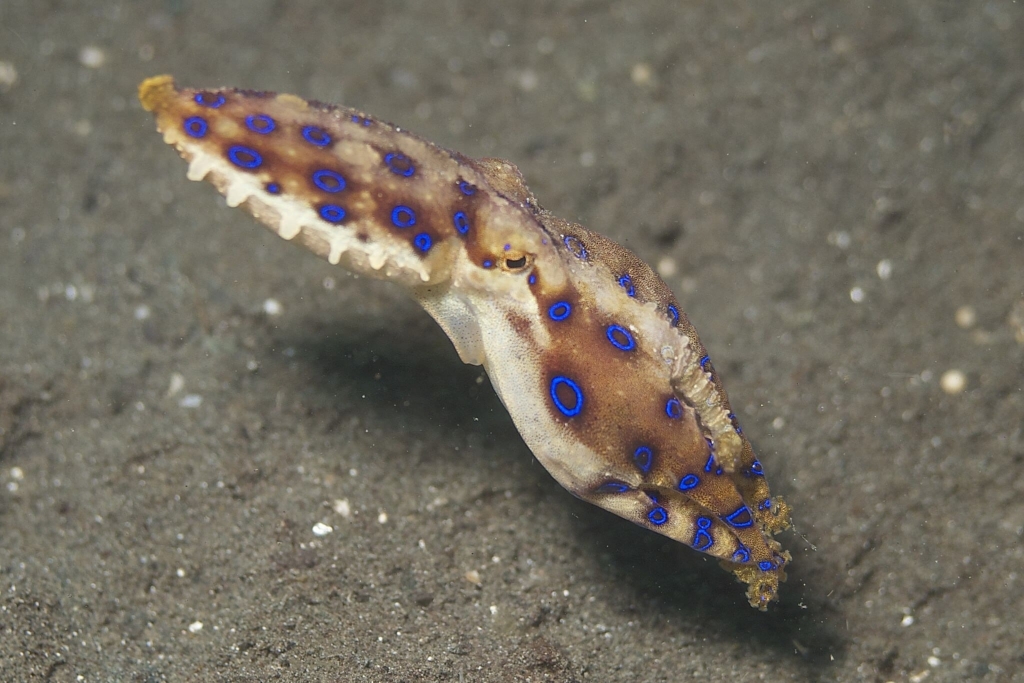
Biggest Aquatic Animal
The blue whale (Balaenoptera musculus) holds the title of the biggest aquatic animal and is, in fact, the largest animal to have ever lived on Earth. These magnificent marine mammals can reach lengths of up to 98 feet (30 meters) and weigh as much as 200 tons.
5 Extinct Aquatic Animals
Throughout Earth’s history, various aquatic animals have gone extinct, primarily due to natural processes, geological events, and changes in climate. However, human activities have significantly accelerated the rate of extinctions in recent times. Some examples of extinct aquatic animals include:
- Steller’s Sea Cow (Hydrodamalis gigas): The Steller’s sea cow was a massive herbivorous marine mammal, once abundant in the waters of the North Pacific. It was hunted to extinction for its meat and blubber by European explorers in the 18th century.
- Dunkleosteus: Dunkleosteus was a prehistoric fish that lived during the late Devonian period, around 380 million years ago. It was one of the largest armored fish of its time.
- Ichthyosaurus: Ichthyosaurus was a marine reptile that lived during the Mesozoic era. Its streamlined body and flippers suggest that it was an agile and efficient swimmer.
- Caribbean Monk Seal (Neomonachus tropicalis): The Caribbean monk seal was the only seal species native to the Caribbean region. It was hunted to extinction by European explorers for its blubber and fur.
- Megalodon (Carcharocles megalodon): The megalodon was a massive prehistoric shark that lived during the Cenozoic era. It was one of the most fearsome predators to have ever existed in the oceans.
5 Aquatic Biome Animals
Aquatic biomes include both freshwater and marine ecosystems, supporting a wide range of animal life. These biomes are crucial for sustaining biodiversity and providing essential ecosystem services. Some animals found in aquatic biomes include:

- Freshwater Fish (e.g., Trout, Salmon): Freshwater fish are found in rivers, lakes, and streams. They have adapted to varying water conditions and exhibit diverse behaviors and feeding habits.
- Marine Fish (e.g., Clownfish, Blue Tang): Marine fish inhabit oceans and seas and come in an astonishing array of colours, shapes, and sizes. Coral reefs, seagrass meadows, and open ocean waters support numerous marine fish species.
- Coral Reef Invertebrates (e.g., Coral, Sea Urchin): Coral reefs are vibrant ecosystems with an abundance of invertebrate life, such as colorful coral polyps, sea urchins, and various mollusks.
- Mangrove Wildlife (e.g., Mangrove Snakes, Mudskippers): Mangroves are unique coastal habitats that provide nursery areas for juvenile fish and refuge for a variety of animals, including snakes and amphibious mudskippers.
- Wetland Birds (e.g., Ducks, Herons): Wetlands are rich in biodiversity and provide essential habitats for numerous bird species. Birds like ducks, herons, and egrets rely on wetlands for feeding and nesting.
5 Cute Aquatic Animals
The world of aquatic animals is brimming with adorable and endearing creatures. Their charming appearances and often playful behaviors capture the hearts of people worldwide. Some cute aquatic animals include:
- Sea Otter: Sea otters are furry marine mammals known for their playful nature. They float on their backs, using their bellies as tables to hold their favorite food, such as clams and sea urchins.
- Baby Penguins: Baby penguins, with their fluffy feathers and awkward waddling, are the epitome of cuteness. They huddle together for warmth and protection from the cold.
- Dusky Dolphin: Dusky dolphins are small and highly social marine mammals. Their acrobatic displays and aerial jumps make them a joy to watch.
- Pygmy Seahorse: These tiny seahorses are masters of camouflage and are often found camouflaging themselves among the branches of coral reefs.
- Harp Seal Pup: Harp seal pups, with their large, expressive eyes and pristine white fur, are incredibly adorable. They are born on ice floes and depend on their mothers’ care for survival.
Most Poisonous Aquatic Animal
The aquatic world is home to several highly poisonous animals that possess potent toxins as a defense mechanism against predators or as a means to capture prey. One of the most poisonous aquatic animals is the box jellyfish (Chironex fleckeri). The box jellyfish is found in the waters of the Indo-Pacific region and is regarded as one of the deadliest creatures in the ocean.
Other highly poisonous aquatic animals include certain species of cone snails (Conus) and blue-ringed octopuses (genus Hapalochlaena).
20 Aquatic Animals List
The world of aquatic animals is incredibly diverse, with countless species adapted to life in water. Here is a list of some fascinating aquatic animals:
- Clownfish
- Blue Whale
- Sea Turtle
- Great White Shark
- Seahorse
- Jellyfish
- Octopus
- Penguin
- Dolphin
- Manatee
- Sea Otter
- Hammerhead Shark
- Manta Ray
- Beluga Whale
- Electric Eel
- Orca (Killer Whale)
- Humpback Whale
- Coral
- Lobster
- Sea Lion
Top 10 Famous Aquatic Animals
Aquatic animals encompass a vast range of species that inhabit water environments. Here are ten fascinating aquatic animals:
- Clownfish
- Sea Turtle
- Jellyfish
- Octopus
- Seahorse
- Dolphin
- Blue Whale
- Hammerhead Shark
- Manta Ray
- Penguin
10 Aquatic Animals Name
Aquatic animals refer to living organisms that reside in water ecosystems, including oceans, rivers, lakes, and ponds. Some common aquatic animal names are:
- Fish
- Crab
- Squid
- Frog
- Turtle
- Dolphin
- Shark
- Seagull
- Seal
- Jellyfish
Aquatic Animals Name In Hindi And English
Here are some aquatic animal names in both Hindi and English:
- Fish – Machhali
- Turtle – Kachhua
- Dolphin – Sindhudurg
- Shark – Saal
- Jellyfish – Jeli-fish
- Octopus – Ekadala
- Seahorse – Samudrik Ghoda
- Crab – Kekda
- Starfish – Taare-machhali
- Lobster – Laabashtara
Aquatic Animals Name In English
Here is a list of aquatic animal names in English:
- Fish
- Turtle
- Dolphin
- Shark
- Octopus
- Seahorse
- Jellyfish
- Lobster
- Crab
- Sea Lion

Aquatic Animals Name In Hindi
Here are some aquatic animal names in Hindi:
- मछली (Machhali) – Fish
- कछुआ (Kachhua) – Turtle
- सिंधुदुर्ग (Sindhudurg) – Dolphin
- साल (Saal) – Shark
- जेली-फिश (Jeli-fish) – Jellyfish
- एकदल (Ekadala) – Octopus
- समुद्रिक घोड़ा (Samudrik Ghoda) – Seahorse
- केकड़ा (Kekda) – Crab
- तारे-मछली (Taare-machhali) – Starfish
- लाबास्तरा (Laabashtara) – Lobster
History of Aquatic Animals
Aquatic animals have a long history, dating back millions of years to ancient oceans. Fossil evidence shows their presence around 3.5 billion years ago, with early forms of bacteria and single-celled organisms. Evolution led to diverse marine life, including fish, invertebrates, and reptiles. Today, aquatic animals thrive in various ecosystems, showcasing remarkable adaptations for survival.
Appearance of Aquatic Animals
The appearance of aquatic animals varies greatly depending on their species and habitats. Their physical characteristics have evolved to suit life in water. Some common adaptations among aquatic animals include:
- Streamlined Bodies: Many aquatic animals, such as fish and dolphins, have sleek and hydrodynamic bodies that reduce drag and facilitate efficient swimming.
- Gills and Fins: Aquatic animals breathe underwater using gills, specialized structures that extract oxygen from water. Fins, which can be single or paired, aid in maneuvering and stability.
- Webbed Feet: Animals like ducks and otters have webbed feet that enhance their ability to paddle and navigate through water.
- Blubber: Marine mammals, like whales and seals, possess a thick layer of blubber, providing insulation and buoyancy.
- Camouflage and Coloration: Some aquatic animals, like octopuses and seahorses, have evolved the ability to change colour and texture to blend into their surroundings and avoid predators.
- Scales and Shells: Fish often have scales that protect their skin, while crustaceans and mollusks may have shells for protection.

Temperament of Aquatic Animals
The temperament of aquatic animals varies widely depending on the species and their ecological role. Some general temperament traits are observed among aquatic animals:
- Social Behavior: Many aquatic animals, such as dolphins and whales, exhibit strong social bonds and live in complex social groups.
- Aggressiveness: Some species of fish and sharks can be territorial and aggressive, particularly during mating seasons or when protecting their offspring.
- Timidity: Some aquatic animals, especially those lower in the food chain, may exhibit timid behaviour to avoid predators.
- Curiosity: Certain species, such as dolphins and octopuses, are known for their curious and intelligent behaviours, exploring their environments and interacting with objects.
- Migratory Behavior: Many aquatic animals, including migratory fish and sea turtles, undertake long-distance migrations to find food, breed, or seek favourable habitats.
Behaviour of Aquatic Animals
The behaviour of aquatic animals is intricately linked to their environment and survival strategies. Some notable behaviours include:
- Feeding and Hunting: Aquatic animals have diverse feeding habits, ranging from filter-feeding on plankton (e.g., baleen whales) to active predation (e.g., sharks).
- Communication: Many aquatic animals, like dolphins and whales, communicate using complex vocalizations, allowing them to coordinate group activities and convey emotions.
- Breaching and Spyhopping: Some marine mammals, such as humpback whales, breach the water’s surface, leaping entirely out of the water. Spyhopping involves raising their heads above the surface to observe their surroundings.
- Nesting and Reproduction: Aquatic animals like sea turtles and penguins exhibit nesting behaviours, returning to specific locations to lay their eggs.
- Schooling: Fish such as sardines and herrings form large schools for protection from predators and improved foraging efficiency.
- Migration: Many aquatic animals, including certain fish species and marine mammals, undertake regular migrations to find food or breeding grounds.
Aquatic Animals Prices
Aquatic animals are valued for various reasons, including the pet trade, fisheries, and conservation efforts. Prices can vary significantly depending on the species, rarity, size, and demand. Here are some examples of different aquatic animals and their approximate prices in both Indian Rupees (INR) and United States Dollars (USD):
- Price of Clownfish (Amphiprion ocellaris):
- INR: ₹500 – ₹1,000
- USD: $7 – $15
- Price of Red-Bellied Piranha (Pygocentrus nattereri):
- INR: ₹2,000 – ₹5,000
- USD: $30 – $70
- Price of Discus Fish (Symphysodon spp.):
- INR: ₹3,000 – ₹10,000
- USD: $40 – $140
- Price of Arowana (Osteoglossum bicirrhosum):
- INR: ₹50,000 – ₹1,00,000
- USD: $700 – $1,400
- Price of Seahorses (Hippocampus spp.):
- INR: ₹5,000 – ₹15,000
- USD: $70 – $210
- Price of Coral (Various species):
- INR: ₹2,000 – ₹10,000 per coral frag
- USD: $30 – $140 per coral frag
- Price of Blue Tang (Paracanthurus hepatus):
- INR: ₹1,500 – ₹5,000
- USD: $20 – $70
- Price of Saltwater Crocodile (Crocodylus porosus):
- INR: Not for sale (protected species)
- USD: Not for sale (protected species)
Aquatic Animals Prices In India
Different Aquatic Animals Prices In India:
| Aquatic Animal | Price Range (INR) |
|---|---|
| Price of Clownfish | ₹500 – ₹1,000 |
| Price of Red-Bellied Piranha | ₹2,000 – ₹5,000 |
| Price of Discus Fish | ₹3,000 – ₹10,000 |
| Price of Arowana | ₹50,000 – ₹1,00,000 |
| Price of Seahorses | ₹5,000 – ₹15,000 |
| Price of Coral (per frag) | ₹2,000 – ₹10,000 |
| Price of Blue Tang | ₹1,500 – ₹5,000 |
| Price of Saltwater Crocodile | Not for sale |
| Price of Goldfish | ₹50 – ₹500 |
| Price of Koi Fish | ₹200 – ₹2,000 |
| Price of Betta Fish | ₹100 – ₹500 |
| Price of Guppy Fish | ₹10 – ₹50 |
| Price of Neon Tetra | ₹30 – ₹100 |
| Price of Swordtail Fish | ₹50 – ₹200 |
| Price of Red Cherry Shrimp | ₹100 – ₹500 |
| Price of Axolotl | ₹1,000 – ₹5,000 |
| Price of Electric Blue Crayfish | ₹500 – ₹2,000 |
| Price of Black Ghost Knifefish | ₹2,000 – ₹8,000 |
| Price of Flowerhorn Cichlid | ₹1,000 – ₹5,000 |
| Price of Giant Freshwater Prawn | ₹50 – ₹200 |
| Price of Siamese Fighting Fish | ₹50 – ₹500 |
| Price of Zebra Danio | ₹30 – ₹100 |
| Price of Angelfish | ₹100 – ₹500 |
| Price of Pearl Gourami | ₹100 – ₹300 |
| Price of African Dwarf Frog | ₹100 – ₹500 |
| Price of Ghost Shrimp | ₹10 – ₹50 |
| Price of Blood Parrot Cichlid | ₹500 – ₹2,000 |
| Price of Oscar Cichlid | ₹500 – ₹2,000 |
| Price of Electric Eel | Not for sale |
| Price of Freshwater Stingray | ₹5,000 – ₹15,000 |
| Price of Electric Catfish | ₹1,000 – ₹5,000 |
| Price of Flower Shrimp | ₹200 – ₹1,000 |
| Price of Dwarf Gourami | ₹50 – ₹200 |
| Price of Japanese Koi | ₹500 – ₹5,000 |
| Price of Black Skirt Tetra | ₹30 – ₹100 |
| Price of Pearl Danio | ₹30 – ₹100 |
| Price of Firemouth Cichlid | ₹100 – ₹500 |
| Price of Bumblebee Goby | ₹50 – ₹200 |
| Price of Clown Loach | ₹100 – ₹500 |
| Price of Gourami | ₹50 – ₹200 |
| Price of Emperor Angelfish | ₹5,000 – ₹15,000 |
| Price of Tiger Barb | ₹30 – ₹100 |
| Price of Redtail Catfish | ₹1,000 – ₹5,000 |
| Price of Freshwater Pomfret | ₹500 – ₹2,000 |
| Price of Featherfin Knifefish | ₹500 – ₹2,000 |
| Price of Zebra Pleco | ₹1,000 – ₹5,000 |
| Price of Paradise Fish | ₹50 – ₹200 |
| Price of Glass Catfish | ₹30 – ₹100 |
| Price of African Lungfish | Not for sale |
| Price of Elephant Nose Fish | ₹100 – ₹500 |
| Price of Tiger Oscar | ₹500 – ₹2,000 |
| Price of Gold Barb | ₹30 – ₹100 |
| Price of Indian Glassfish | ₹50 – ₹200 |
| Price of Harlequin Rasbora | ₹30 – ₹100 |
| Price of Celestial Pearl Danio | ₹100 – ₹500 |
| Price of Blue Gourami | ₹50 – ₹200 |
| Price of Kuhli Loach | ₹30 – ₹100 |
| Price of Redtail Shark | ₹50 – ₹200 |
| Price of Pearl Goby | ₹100 – ₹500 |
| Price of Indian Pea Puffer | ₹50 – ₹200 |
| Price of Flagfish | ₹100 – ₹500 |
| Price of Zebra Loach | ₹50 – ₹200 |
How Do Aquatic Plants And Animals Survive In Water
Aquatic plants and animals have evolved various adaptations to survive in water. Aquatic plants, like seaweeds and water lilies, have specialized structures that allow them to absorb nutrients directly from the water. They also have flexible stems to withstand water currents. Aquatic animals have streamlined bodies for efficient swimming, gills to extract oxygen from water, and some have waterproof fur or feathers to maintain buoyancy and insulation.
How Do Aquatic Animals Breathe
Aquatic animals use different methods for breathing underwater. Most fish have gills, which extract dissolved oxygen from water, while marine mammals like dolphins and whales breathe air through blowholes. Some aquatic insects and spiders have developed unique adaptations to breathe underwater by using air bubbles or special structures.
Respiration In Aquatic Animals Occurs By
Respiration in aquatic animals occurs primarily through their gills. Gills are thin, feathery structures that extract oxygen from water and release carbon dioxide. The process is efficient, enabling aquatic animals to extract enough oxygen to support their metabolism.
Aquatic Animals That Breathe Through Lungs
Some aquatic animals, like turtles, sea snakes, and certain amphibians, have developed lungs and can breathe air. They come to the water’s surface to take in oxygen and have adapted to switch between aquatic and terrestrial environments.
Why Aquatic Animals Breathe Faster
Aquatic animals may breathe faster to meet their increased oxygen demands. Factors such as water temperature, activity level, and stress can affect their breathing rate. Faster breathing allows them to maintain proper oxygen levels for their bodily functions.
Why Do Aquatic Animals Breathe Faster Than Terrestrial Animals
Aquatic animals have higher oxygen demands than terrestrial animals due to the lower oxygen concentration in water compared to air. To compensate, they breathe faster to extract enough oxygen from the surrounding water. Additionally, some aquatic environments, like fast-flowing rivers or turbulent seas, require more effort in breathing.

Aquatic Animals Are Mostly Ammonotelic Because
Aquatic animals are mostly ammonotelic, meaning they excrete ammonia as their primary waste product. Ammonia is highly toxic and requires less water to be eliminated from the body. Since water is abundant in aquatic environments, ammonotelism is an efficient way for these animals to excrete waste.
Do All Aquatic Animals Breathe Oxygen Dissolved In Water
No, not all aquatic animals breathe oxygen dissolved in water. Some aquatic animals, like marine mammals, turtles, and certain amphibians, have lungs and breathe air directly from the atmosphere when they come to the water’s surface.
Which Of The Following Animal Groups Is Entirely Aquatic
Marine mammals are entirely aquatic. This group includes animals like dolphins, whales, seals, and sea lions. Marine mammals have fully adapted to life in water and are dependent on aquatic environments for their survival.
15 Facts About Aquatic Animals
Facts About Aquatic Animals:
- Diverse Habitat: Aquatic animals inhabit a wide range of ecosystems, from freshwater lakes and rivers to deep ocean trenches. They have adapted to thrive in diverse aquatic environments worldwide.
- Ancient Origins: Aquatic life has been around for billions of years. Fossil evidence indicates that marine organisms first appeared in the ancient seas, paving the way for the evolution of aquatic animals.
- Gills for Breathing: Many aquatic animals, such as fish and crustaceans, breathe through gills. Gills allow them to extract oxygen from water, enabling them to live underwater.
- Marine Mammals and Air Breathing: Some aquatic animals, like dolphins, whales, and seals, are marine mammals. They have lungs and need to surface regularly to breathe air.
- Social Behavior: Aquatic animals, particularly marine mammals like dolphins and orcas, exhibit complex social structures and communicate through clicks, whistles, and body language.
- Echolocation: Some aquatic animals, like bats and certain whales, use echolocation to navigate and locate prey. They emit sound waves and interpret the echoes to understand their surroundings.
- Camouflage and Coloration: Many aquatic animals have developed unique color patterns and camouflage to blend into their surroundings, either to avoid predators or to ambush prey.
- Migration: Several aquatic species undertake long-distance migrations for breeding, feeding, or escaping unfavourable conditions. These migrations can span thousands of kilometers.
- Regeneration Abilities: Some aquatic animals, like starfish and certain salamanders, possess remarkable regenerative abilities. They can regrow lost body parts, including limbs and organs.
- Electricity Generation: Electric eels and certain fish can generate electricity to stun prey or defend against predators. Electric eels use specialized organs called electrolytes to produce electric shocks.
- Deep-Sea Discoveries: The deep ocean remains largely unexplored, and scientists continue to discover new species of aquatic animals in deep-sea environments.
- Bio-luminescence: Several marine organisms, like certain jellyfish and plankton, exhibit bioluminescence, producing light as a defense mechanism or to attract prey.
- Endangered Species: Many aquatic animals, such as sea turtles, marine mammals, and sharks, are facing threats like habitat destruction, pollution, and overfishing, leading to their endangered status.
- Incredible Size: Some aquatic animals hold world records for size. The blue whale, the largest animal ever known to have existed, can reach lengths of over 100 feet and weigh more than 200 tons.
- Symbiotic Relationships: Aquatic animals often engage in symbiotic relationships with other species. For instance, cleaner fish remove parasites from larger fish, benefiting both parties.

Pros and Cons of Aquatic Animals
Some Pros and Cons of Aquatic Animals:
| Pros of Aquatic Animals | Cons of Aquatic Animals |
|---|---|
| Rich Biodiversity | Habitat Destruction |
| Oxygen Source | Overfishing |
| Food Source | Pollution Vulnerability |
| Ecological Balance | Invasive Species |
| Medicinal Potential | Climate Change Impact |
| Economic Value | Habitat Fragmentation |
| Scientific Research | Endangered Species |
| Ecosystem Services | Disease Transmission |
| Aesthetic Value | Coral Reef Bleaching |
| Ecosystem Productivity | Plastic Pollution |
Food Chain Of Aquatic Animals
The food chain of aquatic animals represents the interconnected relationships between different organisms in aquatic ecosystems. It illustrates the transfer of energy as one organism consumes another for sustenance. Here’s a simplified example of a typical marine food chain:
- Phytoplankton: The base of the food chain consists of tiny floating plants called phytoplankton. They perform photosynthesis, converting sunlight and nutrients into energy-rich compounds.
- Zooplankton: Zooplankton are small aquatic animals that feed on phytoplankton. They include tiny crustaceans, larval fish, and other microorganisms.
- Small Fish: Small fish like herring, anchovies, and sardines feed on zooplankton, converting the energy from these primary consumers into their own biomass.
- Predatory Fish: Larger predatory fish, such as tuna, sharks, and swordfish, feed on the smaller fish. They occupy a higher trophic level in the food chain.
- Marine Mammals: Some aquatic animals, like dolphins, seals, and whales, occupy the top levels of the food chain as primary consumers of fish and other marine organisms.
- Apex Predators: At the highest level of the food chain are apex predators, like killer whales and large sharks, which have no natural predators in their ecosystem.
Decomposers: Decomposers, such as bacteria and fungi, play a vital role in the aquatic food chain by breaking down dead organisms and organic matter, recycling nutrients back into the ecosystem.
Aquatic Animals Video
Conclusion:
In conclusion, the food chain of aquatic animals highlights the intricate connections within aquatic ecosystems. From the tiny phytoplankton as the primary producers to the apex predators at the top, each organism plays a crucial role in sustaining life in water. Understanding and preserving these delicate relationships are vital for the health and balance of aquatic environments, ensuring the well-being of both aquatic animals and the planet as a whole.
Frequently Asked Questions on Aquatic Animals:
-
National Aquatic Animal Of India Is
The National Aquatic Animal of India is the Ganges River Dolphin (Platanista gangetica).
-
Describe An Aquatic Animal Cue Card
An aquatic animal cue card typically describes a specific aquatic creature, highlighting its unique features, habitat, and behaviour. It may include details about its adaptations for living in water, its role in the ecosystem, and any conservation concerns.
-
How do aquatic animals breathe underwater?
Aquatic animals have developed various breathing mechanisms. Fish use gills to extract oxygen from water, while marine mammals come to the surface to breathe air.
-
What types of aquatic animals exist?
Aquatic animals encompass a vast range of species, including fish, whales, dolphins, sharks, turtles, crustaceans, and various marine invertebrates.
-
How do aquatic animals survive in cold water?
Aquatic animals have adapted to survive in cold water through various strategies like thick blubber in marine mammals and special physiological adaptations.
-
Are all aquatic animals strong swimmers?
Not all aquatic animals are strong swimmers. Some, like corals and barnacles, are sedentary, while others, like sharks and dolphins, are powerful swimmers.
-
What is the biggest aquatic animal in the world?
The blue whale holds the title of the largest aquatic animal, reaching lengths of over 100 feet and weighing up to 200 tons.
-
How do aquatic animals communicate with each other?
Aquatic animals communicate through a variety of methods, including vocalizations, body language, and visual displays.
-
Do aquatic animals migrate?
Yes, many aquatic animals undertake migratory journeys for breeding, feeding, or escaping harsh environmental conditions.
-
Are all aquatic animals carnivores?
No, aquatic animals have diverse diets. While some are carnivores, others are herbivores, omnivores, or filter feeders, depending on their species and habitat.
-
What are some endangered aquatic animals?
Several aquatic animals face endangerment, including sea turtles, vaquita porpoises, and certain species of sharks and whales due to human impacts and habitat loss.
Recommended –
Hemidactylus Frenatus | Common house gecko – Types, Appearance, 12 Facts
Arowana Fish | Information, Price, Types, 8 Facts, Are They Good?





























